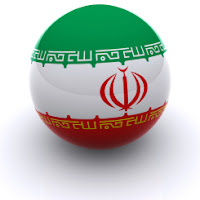 "Iranian Help Suspected in Secret Libyan Chemical Weapons Arsenal." It is no secret that Libya had a chemical weapons program, as did the Islamic Republic of Iran. According to a Defense Information Agency report (cited in Anthony H. Cordesman and Adam C. Seitz, Iranian Weapons of Mass Destruction: The
"Iranian Help Suspected in Secret Libyan Chemical Weapons Arsenal." It is no secret that Libya had a chemical weapons program, as did the Islamic Republic of Iran. According to a Defense Information Agency report (cited in Anthony H. Cordesman and Adam C. Seitz, Iranian Weapons of Mass Destruction: The Birth of a Regional Nuclear Arms Race? [Center for Strategic and International Studies, 2009], 140), Iran initiated a chemical weapon development program in 1983 "in response to Iraqi use of riot control and toxic chemical agents." In April 1984, the Islamic Republic's U.N. representative, Farhang Rajai-Khorassani stated, ''We are capable of manufacturing chemical weapons. If the Iraqis repeat their crime, we may consider using them. But we think that to resort to retaliation can only be justified when all other means of preventing Iraq are exhausted and still Iraq repeats its crime.'' The next year, the American government, citing its intelligence agencies' monitoring of purchases of chemical components used to make chemical weapons as well as monitored radio transmissions, expressed concern that the Islamic Republic was making a major effort in producing chemical weapons (New York Times, April 25, 1985). During the final year of the war, Iranian Prime Minister Mir Hossein Mousavi declared that "sophisticated offensive chemical weapons" and long-range missiles had been deployed along the front. In the estimation of one observer, this was "pure propaganda" (Ronen Bergman, The Secret War with Iran [Free Press, 2008], 304).






.jpg)
0 comments:
Post a Comment
Press "Hide/Show" To Read Other's Comments